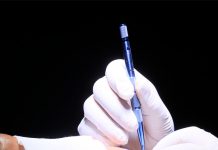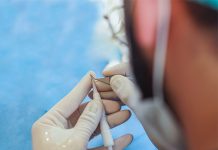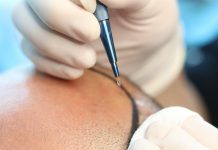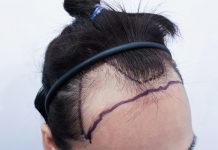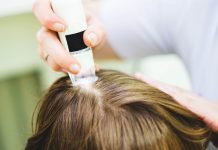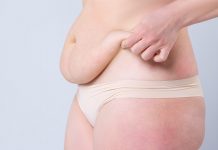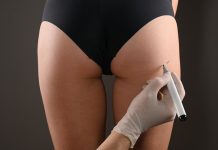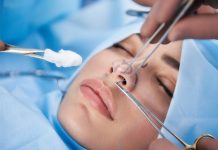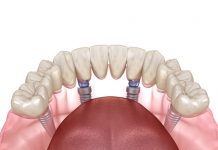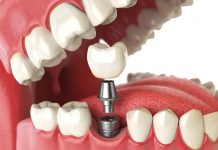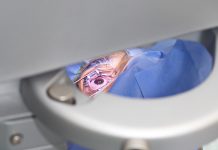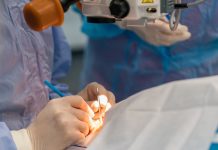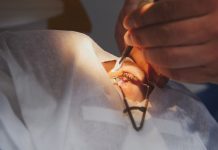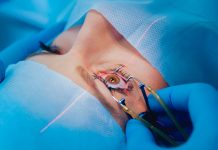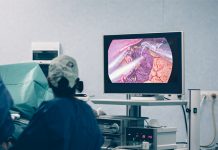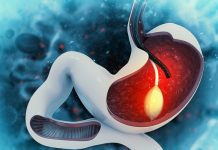Mustache Transplant
Mustache Transplant in Turkey, its average cost, Mustache Hair Transplant procedure, and everything about permanent mustache growth is explained.
A Mustache transplant is one of the hair transplant types that are commonly preferred by men to have the masculine look they desire. Besides, Mustache transplant before and after has got a great difference in people’s facial structure. Overall, a Mustache implant is mainly implanting new hair follicles to the mustache area of the patient’s face to create a full and natural mustache look. With mustache hair transplantation, patients can have permanent results with a life-time warranty. Mustache transplant costs are affordable as well compared to other methods of facial hair restoration and costs are between £650 – £1,100.
Reasons of Hair Loss on Mustache
Hair loss in men can have many reasons and it is vital to know the reason behind your hair loss on your mustache before your mustache transplantation. Some of the hair loss causes can be cured by medication or other non-surgical treatments while some cannot be reversed at all. Your hair loss can be a side effect of a condition you are not aware of. We recommend you have a medical examination before your first mustache transplant appointment. What can cause hair loss on a mustache are explained below:
- Aging: Due to aging, people start losing their hair permanently. It is important to have a beard transplant before you are too old as the number of donor hair that can be used gets lost year by year.
- Genetics: Some people do not grow mustache or beard because of their genetics. Even though they grow some beard, they can have bald patches that stop them from growing their beards. Genetic hair loss can be also referred to as androgenetic alopecia. It is the shrinking of hair follicles before their complete growth. Androgenetic alopecia is a condition that generally targets the scalp; however, it can affect mustache hair as well.
- Hormones: Our hormones play a very important role in our body and even slight changes can cause certain changes in our body. For example, testosterone is one of the main hormonal causes for hair loss or excessive hair in both men and women. With the lack of certain hormones which leads to blocking enough blood supply, you can have baldness or thinning hairs. Before your appointment for a hair transplant surgery, we advise you to have some medical tests to learn more about your hormones. If you have got a condition related to your hormones, you might need to take medicine before the treatment. In most cases, after hormonal treatments, you have a chance to grow hair naturally.
- Besides hormones, other conditions can cause hair loss in the mustache area. One of the most known conditions that cause Mustache and beard loss is alopecia barber. It is a genetic condition that causes bald patches in the beard and mustache area. The condition is called Alopecia areata for hair loss.
- Medications and Treatments: Some medications and treatments can cause permanent or temporary hair loss. Chemotherapy, blood thinners, and steroids are some of the medications that lead to hair loss.
- Lack of Nutrients: Healthy diet is a key factor for beauty. Lack of nutrients such as iron and vitamins might cause hair loss. It is very important to have a diet with balanced nutrients before your mustache transplant surgery.
- Trauma on Mustache Area: Scarring or trauma on the mustache area can cause permanent or temporary loss of facial hair.
Advantages of Mustache Transplantation
Many women prefer different makeup styles for fashion while the majority of men only prefer hair or facial hairstyles for fashion. Mustache can be considered as the makeup of men when it comes to complete their fashion style. A styled full Mustache with a decent hair cut immediately improves the look of men and help them have an attractive aura. Many men with facial hair loss do not love their look and they desire full facial hair. With the new technologies of facial hair transplantation, it is possible to have full facial hair. Advantages of Mustache transplant surgery:
- A mustache transplant is a permanent solution for people who have got facial hair loss.
- Donor hair follicles can be easily found for mustache transplantation so the patient will probably have the look they dream of.
- After the surgery, the patient will have a full, natural-looking, and thick mustache that is perfectly shaped.
- As it is facial hair, the transplant area can be shaved without any problems.
- Any previous scarring on the mustache area can be covered with mustache transplantation.
- In mustache transplantation, the number of hair grafts that will be transplanted is not as much as hair transplantation, hence, it is more economical compared to hair transplantation.
- Instead of spending money on products that promise to make mustache hair grow, getting a Mustache transplant is more appealing to your wallet.
- The patient is able to leave the clinic the same day of the operation and they can start working even the same day (However, it is advised to start working the following day.)
- During the mustache transplant surgery, there will not be any cuts that traumatize the skin of the patient so the healing process is quite fast.
- With new methods of mustache transplantation, there is not any visible scarring after completing the healing period.
As local anesthesia is applied during the surgery, the patient will be fully aware of what is being done and have chance to follow every step of the surgery. It is a painless procedure. Thanks to local anesthesia during the surgery and special solutions that are applied after the surgery, the patient does not feel any pain.
Characteristics of a Suitable Candidate for Mustache Hair Transplant
- People over 25 years old.
- Men or women who have got hair loss on their mustache that is not caused by any reason that does not require a hair transplant.
- People who do not smoke or use alcohol 6 weeks before the surgery.
- People who do not have any medical conditions that increase the risks of the surgery.
Possible Risks and Complications
Mustache transplant is a safe surgery and the success rate of hair transplant surgeries is high enough to expect a successful procedure. There are not any extreme risks that can occur during the surgery if you get medically checked before the surgery and make sure that you do not have any problems that can create a risk. For example, if you have problems with non-stoppable bleeding or if you are prone to have infections, your surgeon might not find the surgery suitable for you. Besides, our face is one of the most sensitive parts of our body. Due to our skin being thinner compared to the other parts of our body, it is more prone to side effects of a hair transplant surgery.
Even many facial products can cause irritation on the skin of our face, so during the healing process, we should be very careful about the products we use after the Mustache transplant surgery to prevent the possible risks.
- Infection: Infection is not a common complication after the surgery period. However, it is important to know that infection is a possible risk in cosmetic surgeries. Therefore, before your mustache transplant surgery, you should be careful about your habits such as smoking or alcohol intake due to the fact that they can increase infection risk. After the surgery, your surgeon will apply a solution that consists of antibiotics which will reduce the risk of infection to a certain degree. You should consult your doctor if you experience infection during the healing procedure of your mustache transplantation. You might get prescribed antibiotics to control your infection.
- Bleeding: As previously stated in the article, our face is very sensitive so bleeding is one of the most common risks of mustache transplantation. The risk of bleeding is on both the donor and transplant areas of the face. If you want to reduce the chance of bleeding you can think of getting the DHI method Mustache transplantation as the implanter used in the DHI technique creates very small holes in the skin that are as wide as the hair follicles. However, the FUE technique has got more survival rate than DHI. Even though bleeding is a complication, it can be controlled easily by applying pressure on the area. It is significant to make sure to quit smoking, alcohol and drug use, or medicine such as aspirin that increases the risk of bleeding, before your mustache transplantation.
- Swelling: Swelling is the other common risk of mustache transplant. It is a reaction of our body towards the irritation of the transplantation; however, it is not permanent. 2 days after your mustache transplant, the swelling of the face will reduce.
- Color change in the skin: After the procedure, the skin can get bruises or redness. This is one of the normal reactions of our skin to a procedure. Unless it is a consistent result that does not heal, you should contact your clinic.
- Itching: Itching is expected after mustache transplant surgery. Even when we shave our beard, we have itching because of the irritation shaving created. During the mustache transplantation, your hair follicles are removed and those hair follicles are transplanted into your bald areas. This creates irritation to our skin and causes itching. It is quite significant to be patient to that itching feeling owing to the fact that hair grafts that have been implanted are not fully healed yet. Hence itching can cause those hair grafts to get misplaced. It is important to be gentle to your scalp during the healing process.
Before Mustache Transplantation
Mustache hair transplantation is a sensitive process, the hair transplant doctor who performs the surgery should be highly experienced and skilled as the creation of lines and hair graft appliance needs an excellent work for natural results with even lines and hair grafts should be equally transplanted to avoid asymmetrical look or bald patches. Before your mustache transplantation, you should choose a trustworthy clinic with an experienced and skilled surgeon. In Turkey, there are clinics which provide satisfactory results with best care in affordable prices compared to other countries.
The step before your mustache hair transplantation is making sure that your doctor knows everything about your previous medical records that contains your medical conditions, previous surgeries or any surgeries you plan to have in a year, any medication you used and you are currently using, any herbal medication and drug habits. This plays almost the most significant role for the success of your mustache hair transplant surgery. Some medications and condition can increase the risk of the surgery. Nothing is more important than your health. In addition, your hair loss can be treated if it is caused by a temporary reason so you might not need a transplant surgery. You should make sure to bring your medical records to your doctor in your first appointment.
How Mustache Hair Transplantation Is Performed?
Mustache hair transplantation has got a similar procedure with hair transplantation for scalp, however, the procedure is faster compared to hair transplantation for scalp as the number of hair follicles that are transplanted during the process is less. The method which is used for mustache hair transplant is significant to avoid scarring. As FUT method is an old method which is invasive to the skin, it is not preferred for facial hair restoration. The methods used for facial hair are mostly Follicular Unit Extraction (FUE) and Direct Hair Implantation (DHI). Both of those methods prevent patient to have visible scarring after the surgery is completed. The process of mustache transplant changes because of the methods used. However there are mutual steps of the process:
- Signing a consent form to prove that the patient accepts every risks and complications that might occur during the surgery or after the surgery. This is a common step for every cosmetic surgery.
- Drawing lines on mustache area to make sure what is planned exactly. This helps doctors and patients to have the look they want to have and it is a guide for doctors while implanting the hair grafts.
- Trimming hair on the donor area. The donor area is generally trimmed to 1-2 mm length for extraction process.
- Extraction of hair follicles. During the extraction of hair follicles, different methods can be used. For example, while FUE method has got micro-needles, DHI method has got Choi-Pen. Extraction of hair follicles can include micro incisions.
- Preparing hair follicles is another step of the mustache hair transplantation. The surgeon extracts hair follicles and collects them in a saline solution. This solution increases the success rate and enables hair follicles to grow like a natural hair. During that step, hair transplant doctors try to choose the best hair follicles which are healthy and strong. This is another factor to increase the success rate of mustache hair transplant. After the preparation, hair grafts which contain 1-4 hair follicles are ready for implantation.
- Implanting hair grafts. This step is different in each method. In FUE method, a previous incision is created with micro-needles while Choi-Pen enables direct implantation for DHI method.
- After the implantation, there will not be any stitches made. Your surgeon might apply a solution which consist antibiotics on both of the areas to prevent infection and pain.
- If needed, garments can be applied on the operated areas.
Follicular Unit Extraction for Mustache Hair Transplant
FUE promises a scar free method for mustache hair transplant due to the fact that during the mustache transplantation, micro-punches are used for both the extraction of hair follicles and implantation of prepared hair follicles which are called hair grafts, the patient does not have a visible scarring on his mustache area or donor area. One of the advantages of that micro-punch and micro-needles used is that they do not traumatize the skin or tissues of face, they are micro sized holes and they recover quite swiftly after the procedure is completed. This method does not require any incision or cuts, therefore, there will not be any incision marks. Steps of FUE for mustache hair transplantation:
- Drawing lines that doctor and patient planned together, trimming donor hair area in the length of 1-2 mm and applying anesthesia.
- Extracting hair follicles from the donor area chosen. Those hair follicles are removed with micro-needles (1 mm) that creates micro incisions around hair follicles. The doctor removes hair follicles and the donor hair follicles wait in a saline solution that increases the life of hair follicles. After the extraction is completed, the doctor prepares those hair follicles to hair grafts to implant them.
- During the implantation, micro-punches (1 mm) are used. Before implanting those hair follicles, the doctor creates micro incisions on the implant area of the face then implants the hair grafts prepared. Those hair grafts mostly have got 1-4 hair follicles.
- A solution is applied on the surface of both transplant and donor areas to fasten healing and increase the success rate of hair grafts implanted in the Mustache area.
Direct Hair Transplantation for Mustache Hair Transplant
DHI is one of the new methods of hair transplantation and it is very popular and preferred in 2020. DHI promises a scar-free mustache hair transplantation experience and a faster healing procedure compared to FUE transplantation method. What makes DHI promise those? DHI hair transplant method is operated using an implanter called Choi-pen. It is a new item that is used during hair transplantation which is invented by Korean scientists. Choi implanter creates incisions that are smaller than other methods. The incision is at the same size as hair follicles and that leads to a faster healing process with no scarring and less irritation. The skin, almost, does not have any chance of getting traumatized. Besides, this process is applied more gently compared to other methods of hair transplantation which ends with more natural results.
In that method, with the smallest incision, it enables doctors to harvest more hairs and implant more hairs, owing to the fact that it is not invasive and smaller than microneedles. The process of DHI for mustache hair transplant is:
- Similar to all hair transplantation methods, it starts with signing a consent form, appliance of local anesthesia, trimming of the donor hair area, and drawing lines for the target image.
- After those steps, the hair transplant doctor starts extracting donor hairs from the chosen donor area using Choi-pen. This pen creates incisions, removes the hair follicles, and collects them in itself in a special solution like saline solution. During the surgery, several Choi-pens can be used as every implanter has got a certain capacity for extracted hair follicles.
- After extraction, the hair transplant doctor implants hair grafts on the target area without creating any previous incisions. Choi-pen creates micro incisions with the same size of hair follicles and implants them to the mustache area.
- This procedure takes more time than an FUE hair transplant.
Recovery
During your recovery period, you have the responsibility to make it the best for yourself by following what your doctor who performed the surgery advises. You should be gentle on your skin after the surgery to avoid any problems. You will be informed what to do and how to take care of your surgical areas in detail after your operation. Some of the most important habits you should follow are:
- Protecting your scalp from direct sun or heat in the first weeks of your surgery.
- Having a break of physical activities that require strength for 4-7 days.
- You should not swim for at least 10 days.
- You should take care of your facial hygiene.
- Certain medications that can cause complications should be avoided.
- For a few days after your mustache transplantation, you should not drink alcohol, use any kind of drugs or smoke.
- You should not itch or rub your mustache or donor area.
- After a week, you can shave gently.
Your recovery from the surgery will be very fast. Your scars will start healing immediately and you will be fine after a week. During the first month, we advise you to be pretty gentle and take advice from your doctor about the products you use, not to irritate your surgical areas. After several weeks, the hairs transplanted might start falling off. This is not a bad sign. They will start growing back after 3 months and you will start seeing complete results between 6-12 months after your surgery.
Frequently Asked Questions About Mustache Transplant
How much does a mustache hair transplant cost?
The cost of a mustache hair transplant varies from clinics because of additional services and the experience of the doctor. If you consider getting a mustache transplant with a low budget, you can consider having your transplant surgery in Turkey, where costs are pretty affordable even for the best clinics compared to the ones in the UK.
How long does the process of mustache transplantation take?
It takes between 3-5 hours depending on your desired look and hair graft need.
When will I completely heal from my mustache transplant?
Your scars will heal between a week and ten days. You will see full results in between 6-12 months.
Is it painful to have mustache hair transplantation?
No. Local anesthesia is applied on both donor and transplant areas during your mustache transplantation. You will not feel any pain. However, you might feel some irritation and itching on the areas after your surgery when the local anesthesia wears off. It should not be a fact to worry about because the healing process after a mustache hair transplant is quite fast.
Do I have to stay in the hospital after my mustache hair transplantation?
No. You will not stay in a hospital or clinic after your mustache transplant surgery. During the surgery, only local anesthesia is applied and there is not any serious incision made.
Which areas can be used as donors for mustache hair transplants?
Donor hair for the mustache area can be transplanted from the scalp, pubic hair, and beard.
Does mustache hair transplant offer a permanent result?
Yes. Mustache Hair Transplant promises a permanent result for most of the patients. The success rate of Mustache Hair Transplant is between %90-95. However, the results can differ because of hormonal changes, conditions and trauma.
Are they any alternatives for mustache hair transplant?
Partly yes. There are non-surgical treatments such as laser treatment and product-based treatments. They do not have drastic changes like Mustache Transplantation and they cannot create new hair growth. They can only help to thin hair to be restored. There are not any other treatments that restore permanently lost hair.
Is it worth having mustache transplantation?
Yes. After your mustache transplantation, you will grow an attractive mustache that is thick and natural-looking. As the results of Mustache hair transplant surgery are permanent, and it promises a life-time warranty, we recommend you to give it a try. When you consider the fact that you will feel both physically and psychologically better after your surgery, your social life and personal relationships will improve with your self-esteem that has improved following surgery.
Many men use self-care products such as lotions or nutrient oils that promise hair growth. Most of those products, unfortunately, do not make real what they promise in their advertisements, and every new product people try costs more and more. When you consider the money you spend on those products, you should get a hair transplant surgery. It is significant to note that permanent hair loss cannot be reversed by those products. Those products can only help to straighten remaining hairs, they will not cause any new hair growth as hair follicles of lost hairs are already permanently dead.
Will there be any visible scarring after mustache transplantation?
No. Mustache Hair Transplantation is generally performed with FUE and DHI hair transplant techniques. Those techniques do not cause scarring after the healing procedure is completed. However, scarring is one of the risks of hair transplant surgeries.


